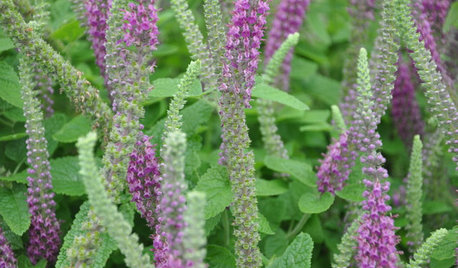What elements influence taste, flavor, etc in Nutrient Sol.
jean-luc
14 years ago
Related Stories

HOUZZ TOURSMy Houzz: Global Handicrafts Personalize a Fixer-Upper
Worldly artifacts and splashes of bright color give a family’s home in the Netherlands one-of-a-kind flavor
Full Story
KITCHEN DESIGNWorld of Design: Global Foodies and Their Kitchens
Join us as 11 food lovers tell us about their kitchens and give us a taste of their culinary heritage
Full Story
GREEN BUILDINGHouzz Tour: See a Concrete House With a $0 Energy Bill
Passive House principles and universal design elements result in a home that’ll work efficiently for the long haul
Full Story
KITCHEN STYLESNew Southern Style for the Kitchen
Gracious tradition is alive and well, bless its heart, but Southern kitchens are welcoming in modern updates too
Full Story
DECORATING GUIDES9 New Ways to Look at Cinco de Mayo Decor
Mon Dieu! There's a French Design Story Behind the May 5 Festivities
Full Story
FEEL-GOOD HOME9 Smells You Actually Want in Your Home
Boost memory, enhance sleep, lower anxiety ... these scents do way more than just smell good
Full Story
KITCHEN OF THE WEEKKitchen of the Week: Fans of Traditional Style Go For a ‘Mad Men’ Look
The TV show inspires a couple to turn their back on the style they knew and embrace a more fun and funkier vibe in their kitchen
Full Story
ARCHITECTURERoots of Style: Do You Live in a Minimalist Traditional House?
Cottages, bungalows, farmhouses ... whatever you call them, houses in this style share several characteristics. See how many your house has
Full Story
HOUZZ TOURSHouzz Tour: Taking on the Ruins of an 1800s Bourbon Distillery
Crumbling stone walls and wood from former tobacco barns creates a stunning new home amid rolling Kentucky farmland
Full Story
COLORFUL HOMESHouzz Tour: Color Brings Endless Summer to a Santa Monica Home
An interior designer gives her older house a casual cottage feel with vibrant hues and vintage pieces
Full StoryMore Discussions







gringojay
jean-lucOriginal Author
Related Professionals
Otsego Landscape Architects & Landscape Designers · Panama City Landscape Architects & Landscape Designers · Forest City Landscape Architects & Landscape Designers · Gainesville Landscape Contractors · Apollo Beach Landscape Contractors · Beverly Hills Landscape Contractors · Cliffside Park Landscape Contractors · Federal Way Landscape Contractors · Franklin Landscape Contractors · Hickory Hills Landscape Contractors · Manhattan Landscape Contractors · Merced Landscape Contractors · Royal Oak Landscape Contractors · Webster Groves Landscape Contractors · Brentwood Los Angeles Outdoor Lighting & Audio Visual Systemsgringojay
jean-lucOriginal Author
jean-lucOriginal Author
gringojay
hydro4me
gringojay